The Ziggurat is a religious structure typical of major cities of ancient Mesopotamia (present-day Iraq, Iran, Kuwait and Syria), built as a pyramid-shaped temple. The construction of ziggurats was common from 4200 to 2500 years ago. The word ziggurat is a modern-day pronunciation of the Zighurtu an Akkadian term that comes from the Babylonian and Assyrian texts, meaning a multi-storied temple. The ziggurat is a tower-like stepped pyramid-shaped temple with several floors above which the main temple was located. The construction of such monuments was common in almost all ancient cultures. Although many Elamites used to call it “Kokono“, such monuments in Iran and Mesopotamia are nowadays called ancient ziggurats. The most famous ziggurat of Iran is Chogha Zanbil in Susa.
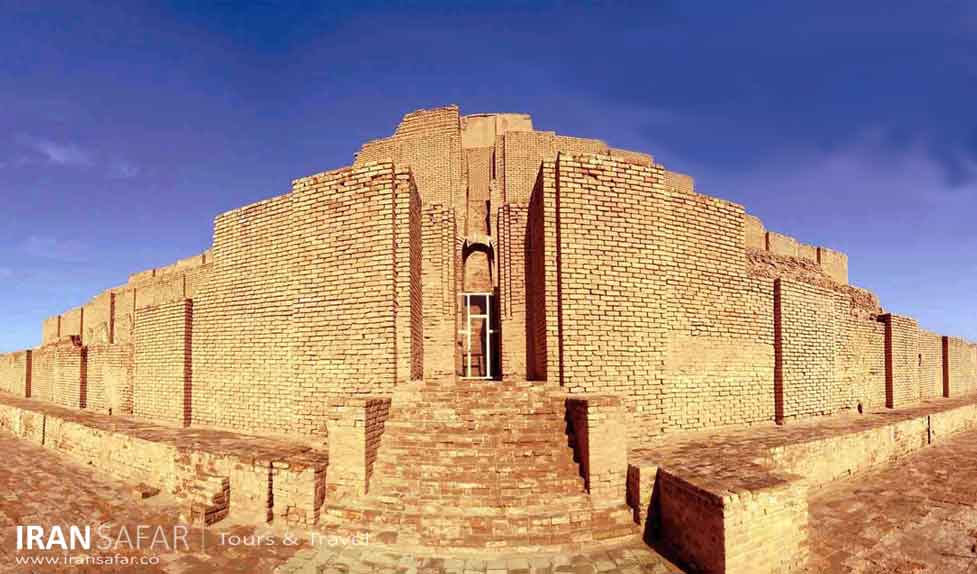 Chogazanbil Ziggurat, Susa, Iran
Chogazanbil Ziggurat, Susa, Iran
Ancient Mesopotamian Ziggurats
A ziggurat is a type of stepped pyramid that was common in ancient Mesopotamia, particularly in Sumeria, Assyria, and Babylonia. They served as temples dedicated to the deities of the Mesopota. The term “ziggurat” originates from the Akkadian word “ziqquratu,” which means “built on a raised area.”
Ziggurats were characterized by a series of receding terraces or levels, each smaller than the one below it. This design created a stepped or tiered appearance, with a broad base and a temple or shrine at the summit. The primary purpose of ziggurats was religious. The temples atop the ziggurats were often devoted to the chief god of the city or region.
One of the most well-preserved examples of a ziggurat is the Great Ziggurat of Ur in present-day Iraq, dating back to around 2100 BCE. While many ziggurats have not remained through the passage of time, their architectural and religious importance provides valuable insights into the beliefs and cultures of ancient Mesopotamia.
So far, 11 ziggurats have been discovered from historical written sources and 21 ziggurats from archaeological excavations.
Dur-Sharrukin Ziggurat
The first Ziggurat discovered by archaeologists was the Dur-sharrukin Ziggurat in the Assyrian capital, present day Khorsabad. This ziggurat was built at the behest of the Assyrian king Ashurbanipal in 630 BC. There are now three floors left, and the only access to the upper floors is through a ramp. The multiple floors of this ziggurat were painted in white, black and red (from bottom to the top).
On 8 March 2015 the Islamic State of Iraq and the Levant (ISIS) reportedly plundered and demolished the Dur-Sharrukin site.
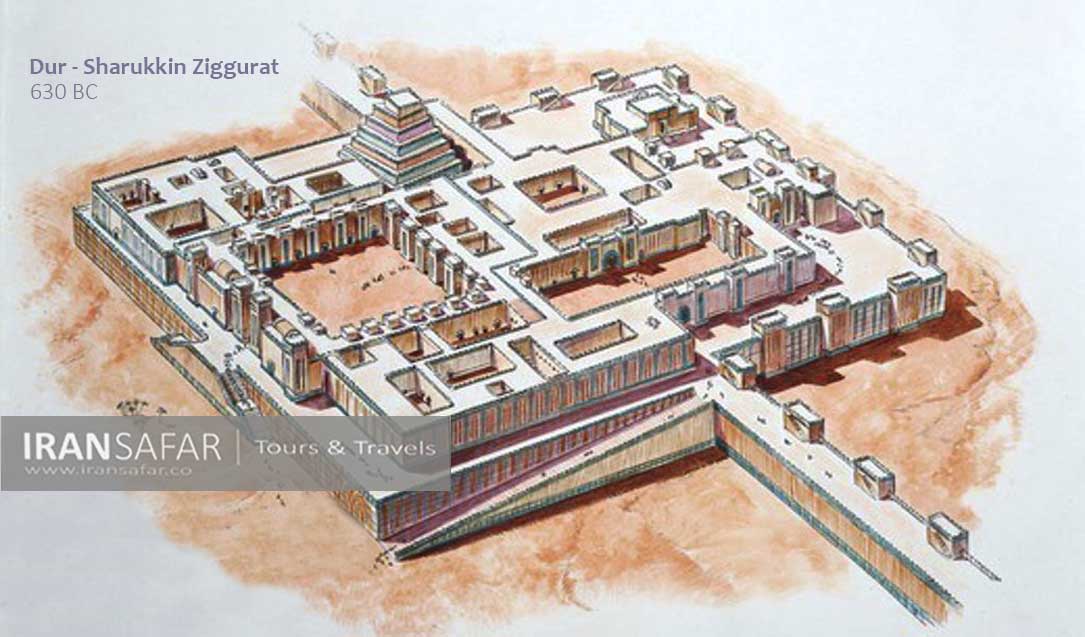 Dur-Sharukhin Ziggurat, Khorsabad, Iraq
Dur-Sharukhin Ziggurat, Khorsabad, Iraq
Ziggurat of Ur
The largest, most complex, and the most intact ziggurat ever found in Mesopotamia is the ziggurat of Ur, located in the ancient city of Ur near Nasiriyah, in the Iraqi province of Dhi Qar. This large polygon structure is 45 by 64 m and has three terraces at different levels that are 20 to 30 m high with a large staircase leading to each of these terraces. It was built in 21st c BCE by Ur- Nammu, the founder of the third dynasty of Ur, in order to be a temple to worship the goddess of moon called Nanna.
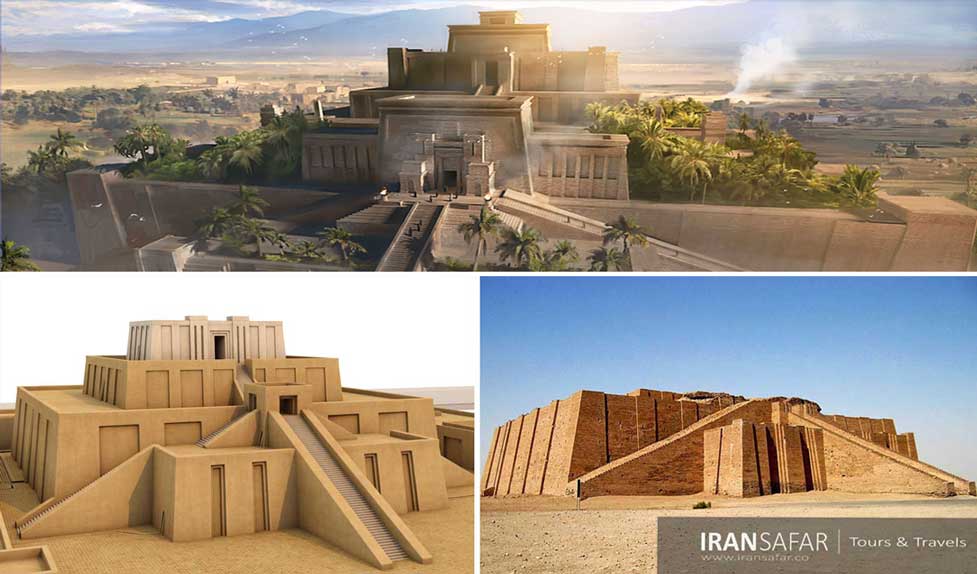 Ur Ziggurat, Iraq
Ur Ziggurat, Iraq
At the highest point of the ziggurat is said to be the temple of the goddess Nanna , the patron god of the ancient city of Ur. Unfortunately, this temple is destroyed and only several blue bricks have been found, believed to be of the temple’s interior decoration.
By the end of the sixth century BC, this ziggurat was ruined because unlike the Egyptian pyramids, the ziggurats were made of mud bricks and stacked with bitumen or mud. These bricks were moistened by winter rains and cracked in the summer heat.
The ziggurat was restored twice; once by Neo-Babylonian King Nabonidus, in the sixth century BCE, he built several buildings on top of the main building. While Ur-Nammu used solid bitumen, mud and lime to build the ziggurat, Nabonidus’ workers used ordinary mortars to repair it, so the wind and rain have gradually destroyed the structure after hundreds of years .
The second restoration process took place 2500 years later, in the 1980s, under the rule of former Iraqi President Saddam Hussein.
Ziggurat of Babylon
Other well-known ziggurat of the ancient world are the Ziggurat of Babylon (also the tower of Babel) known as the Connection house of earth and sky.
 Illustration of the tower of Babel
Illustration of the tower of Babel
The construction project of this tower began but God was dissatisfied with this action and it was decided that they should be scattered on the earth. Therefore God decided to destroy their arrogance by destroying their ability to understand one another. Divine judgment was given to them, the various languages of the world were created, and people were scattered throughout the earth.
Ziggurats vs Pyramids
Although the two structures are very similar, they bear some differences:
1. Pyramids are mostly used as tombs or burial sites while ziggurats are more temples.
2. Ziggurats were built in ancient Mesopotamia while pyramids were built in ancient Egypt and South America.
3. Ziggurats have steps or terraces on the sides and are multi-story while pyramids have only one long stair.
4. Ziggurats are mostly decorated but solid structures with a temple on the top (with ramp or stair access), while pyramids are usually bare and have internal chambers.
The oldest Ziggurats in Iran
Here is a list of ancient ziggurats of Iran:
1
Sialk Ziggurat of Kashan
The world’s oldest ziggurat: It was built between 4700 and 4500 years ago, almost when writhing was invented. More than 125,000 bricks measuring 35 by 35 by 15 cm were used to build this ziggurat, which consists of three platforms on top of each other. The actual height of the ziggurat is unclear, but what remains of it today is 14 meters above ground level. The only access to the top of the ziggurat is a gentle slope ramp.
2
The Susa Ziggurat
Built about 3800 years ago which is now destroyed and we know about it from historical sources.
3
Konar Sandal Ziggurat
This recently discovered ziggurat is located in Jiroft area, and is remaining from the Jiroft civilization.
This ziggurat which is a thousand years older than zigurat in Choghazenbil, belonged to ancient Arta tribe. It has not yet been excavated completely.
4
Haft Tappeh Ziggurat
Based on medieval Elemite excavations by Dr. Negahban in 1978, this structure was founded in 1357 BC.
Haft Tappeh, which is an ancient site in Khuzestan province, is located about 10 km southeast of the city of Susa and is a collection of ancient hills that probably contain the city of Tikni or Kabnak of Elam civilization.
The vastness of this ancient site has attracted the attention of various explorers. According to some theories, this city was one of the important political centers during the reign of the Elamites and the kingdom of Tepti -Ahar in the fifteenth century BC, after which the city of Susa became the center of power, although there is no strong evidence to prove it. .
5
Chogha Zanbil Ziggurat
Chogha Zanbil Is the largest and most intact known ziggurat in the world.
Located near the Haft-Tepe Ziggurat, Chogha Zanbil also belongs to the Middle Elamite period and was built in 1250 BC. The Russian-French archaeologist Roman Girshman carried out the first scientific excavations on an ancient mound where Chogha Zanbil existed beneath, and unveiled the five-storied ziggurat from under the soil. Three floors of this ziggurat have remained intact.
Ziggurat of Choghazanbil is located in Khuzestan province, 40 kilometers southeast of Susa and 20 kilometers from Haft-Tepeh, near the western bank of the Dez River.
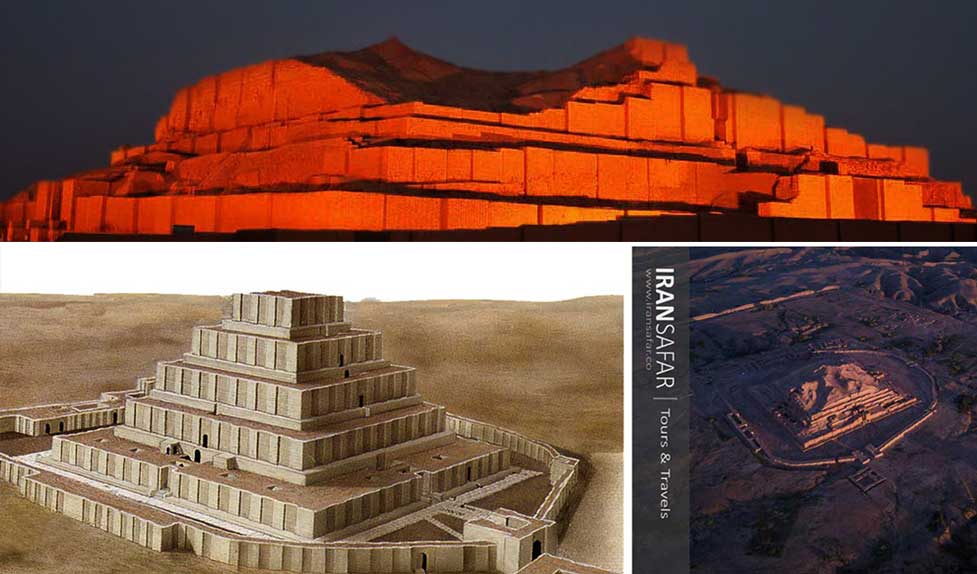 Chogazanbil Ziggurat, Susa, Iran
Chogazanbil Ziggurat, Susa, Iran
Choghazanbil architecture
Archaeological site of Chogazanbil consists of a huge ziggurat or temple built by Elamite King Untash Napirisha (c.1265–c. 1245 BCE) to fulfill the function of being the holy temple of god Inshushinak (Protective God of Susa) around 1250 BC. The ziggurat is a huge multiple-story monument whose floors are all built individually on the ground with different heights. The ground floor is a square of 103 x 103 m.
The Choghazenbil area is enclosed by a huge surrounding wall. Another inner wall encompasses the central building making an enclosure of about 400 * 400 m as a yard around the building. There used to be seven gates that connect the courtyards with the surrounding area of the ziggurat.
The main building of Chogazenbil ziggurat had originally five floors, that two of which have been destroyed. The main entrance in the south part of the complex has decorative bricks with colorful blue and white glaze and decorative motifs. The name of the founder, the Elamite King Untash Gal is inscripted on them in the Elamite cuneiform script along with Inshushinak, the great Elamite god.
The Sacrifice Platform: Around the temple, on the courtyard floor are two circular cut platforms, with unknown function. Some archeologists have considered them as altars, and others related them to astronomy and the sundial. But the prominent theory mentions them as Sacrifice platforms.
At Louvre Museum in Paris there is a bronze plate, most likely belonging to Chogazanbil Sacrificial Table. Two snakes and five women are seen around the sacrifice plate. The size, precision and elegance used in the construction of this plate show the great skill of the Elamite metalworkers.
The Decline of a Civilization
The beautiful and scenic architecture of Dur-Untash attracted lots of people who migrated to this large city from different parts of Mesopotamia, but the prosperity didn’t last long. With the death of King Untash Napierisha, his successors did not continue to complete the development of the city, and even some of the city’s artworks and sculptures were moved to Susa. In the year 1260 BC, 611 years after the construction of the city of Dur-Untash, the powerful Assyrian king, Ashur Banipal, attacked Elam to take revenge on Elamites for the conquest of Babylon, the great ally of Assyrians.
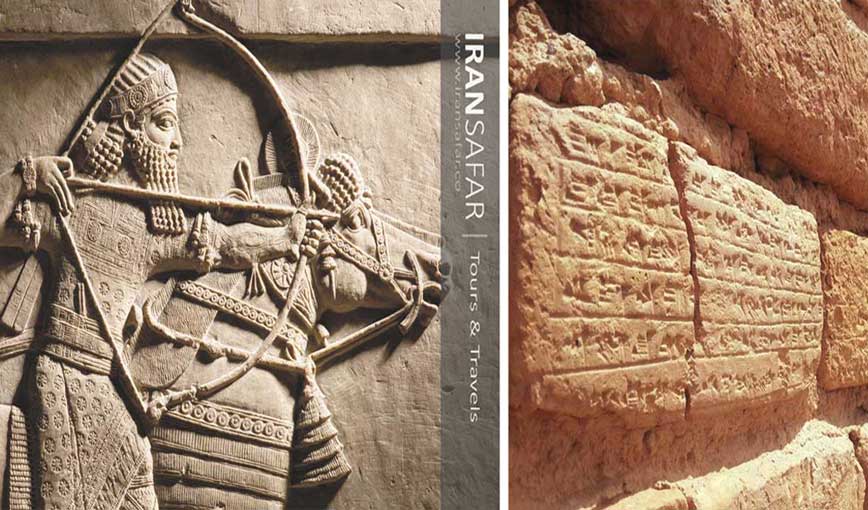 Left: Assyrian King Ashurbanipal, British museum | Right: Clay Inscription, Chogazanbil, Iran
Left: Assyrian King Ashurbanipal, British museum | Right: Clay Inscription, Chogazanbil, Iran
In one of his inscriptions, the story of the conquest of Elam was described as follows: “I turned Susa and other Elamite cities into ashes and in one month and a day the land of Elam with all its breadth, I conquered. I deprived this land of cattle and sheep, and of music, and allowed the predators, snakes, and animals to conquer it.”
Ziggurat – Pyramids of Mesoamerica
Mesoamericas actually contain more Ziggurat structures than the rest of the planet. Civilizations such as Aztec,Olmec, Maya, and Inca all built stepped pyramids to get closer to gods, to house their deities, to sacrifice, as well as to bury their rulers. In these old cultures, temples formed the sacred center of public life and were the site of holy rituals. The best known Mesoamerican stepped pyramids are as below:
Pyramid of the Sun and the Pyramid of the Moon at Teotihuacán in central Mexico
The Castillo at Chichén Itzá in the Yucatan,
The Great Pyramid in the Aztec capital of Tenochtitlan
The Pyramid at Cholula and the Inca’s great temple at Cuzco in Peru.
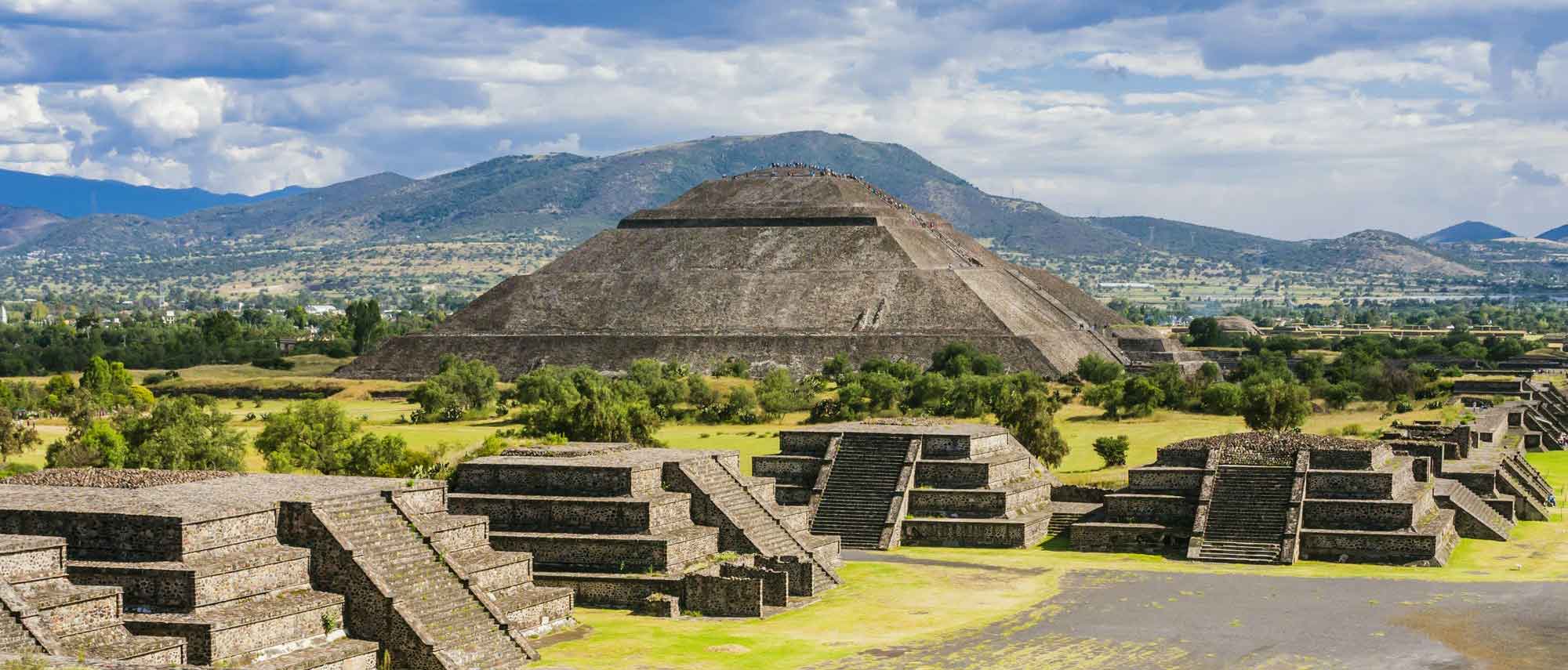 Teotihuacan, Mexico
Teotihuacan, Mexico
Ziggurat Fast Facts
– Ziggurat is a solid structure (without any interior space) made of clay bricks.
– The bases of ziggurats are square in shape.
– Geographically, apart from Sialk Ziggurat in Kashan located in central Iranian plateau, ziggurats are mostly distributed between Sumer – Babylon – Assyria and southwestern Iran. So far, none of the identified ziggurats have remained intact and therefore their exact height has not been determined. The upper floor of the ziggurats was reached by stairs or a slope.
– The spaces around the ziggurat were decorated with trees.
– In ancient times, people believed that Gods lived in the sky and there was the custom of worshiping deities from high places. The purpose of the ziggurat was to get closer to the gods.
– Inhabitants of the Central Plateau of Iran and Mesopotamia built ziggurats in a shape inspired by high mountains and held religious ceremonies on top of them.
– Multiple floors of ziggurats are built on the ground independently. They made the tallest floor in the center, thereby reinforcing the sides of the tall central tower by building a new floor all around it, so the complex looked like a huge multi-storied pyramid.

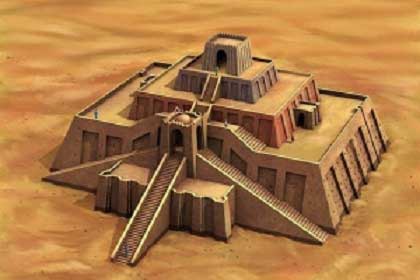
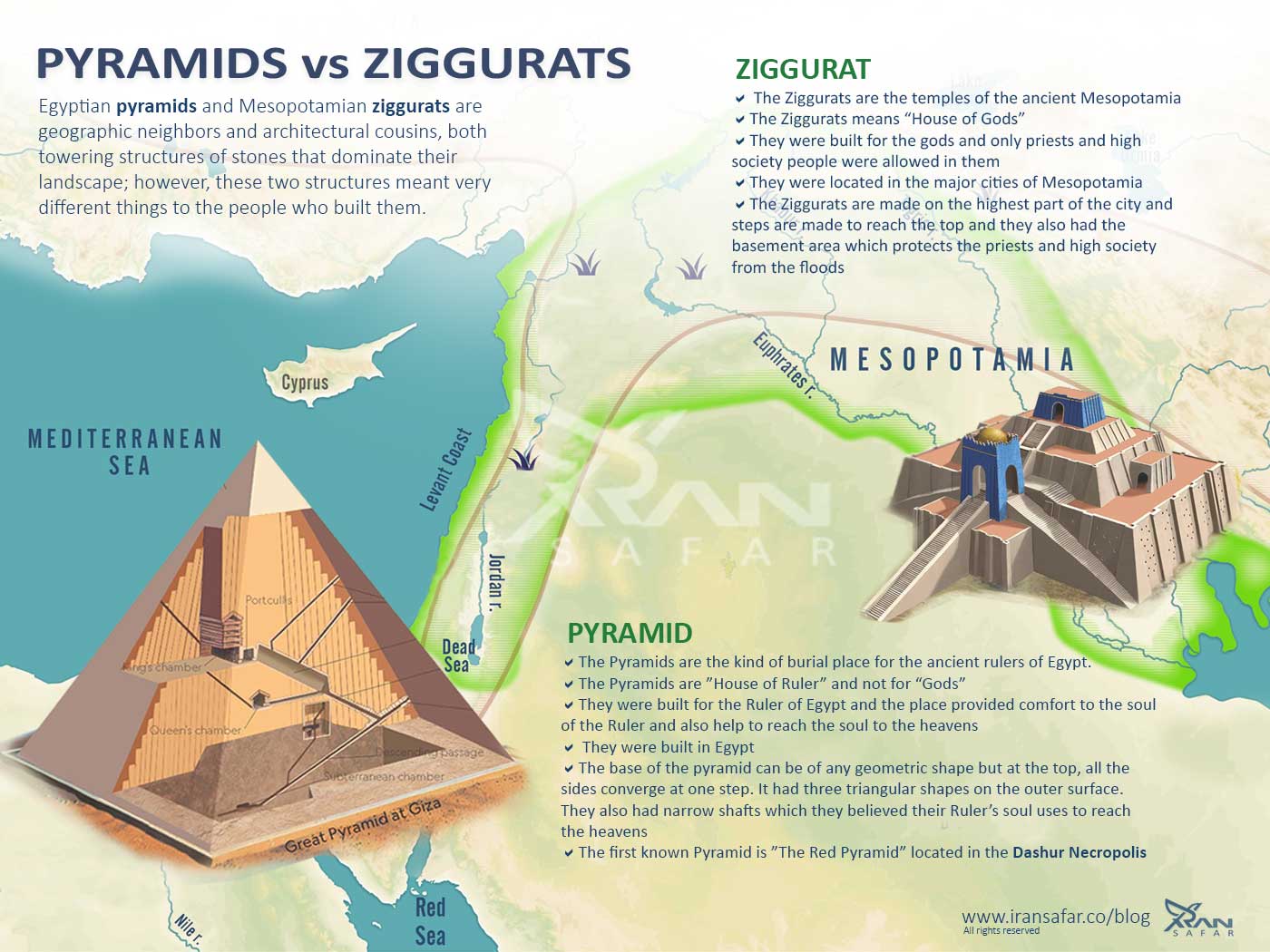

Message by: Alex Williams
Visiting Chogazanbil Ziggurat is a must while in Iran. The magnitude of this ancient structure and its well-preserved condition left me in awe. The intricate brickwork and the religious significance of this ziggurat make it a must-see for anyone fascinated by ancient civilizations.